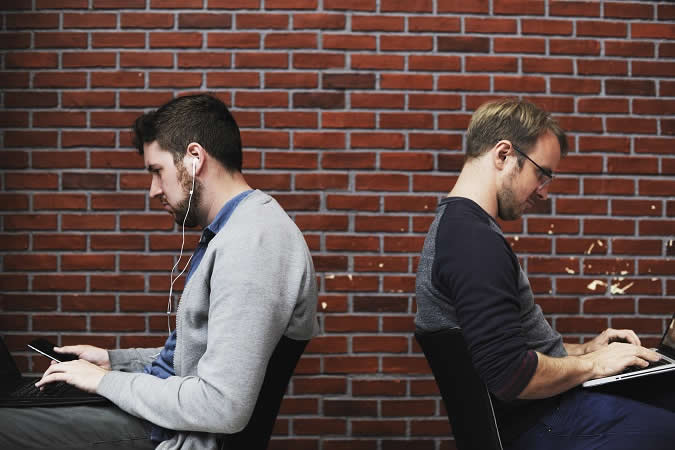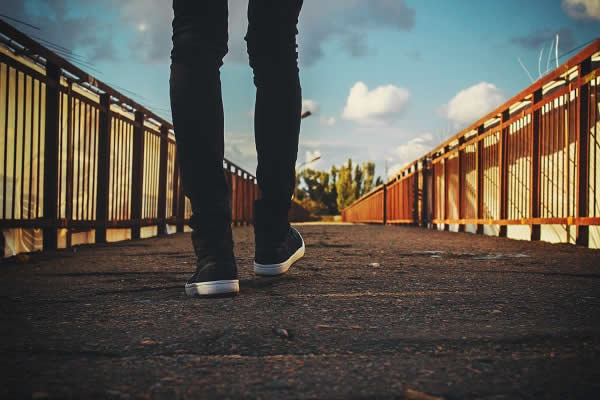Positive Health Online
Your Country

How to Treat and Avoid Low Back Pain
listed in back pain, originally published in issue 249 - October 2018
Low back pain is the most common symptom presented to a GP in the UK. According to recent figures from the Office for National Statistics, almost 31 million days of work are lost every year due to back pain. Treating all types of back pain costs the NHS more than £1 billion per year. The costs of care for low back pain exceed £500 million a year. Lost production as a result of low back pain costs the UK economy £3.5 billion a year.
According to NICE (National Institute for Health and Clinical Excellence), low back pain results in many problems, including; impaired quality of life, mobility and daily function, long-term morbidity, a higher risk of social exclusion through inability to work, reduced income, reliance on sickness benefits and social isolation through disability. Low back pain represents a considerable burden to individuals, families, society and the economy (for example, loss of working days, and early retirement).
Causes of Low Back Pain
To be able to prevent the occurrence of low back pain it is important to understand what causes it in the first place.
Improper Lifting Techniques
One of the most common causes of acute low back pain is from lifting something without adopting a proper lifting technique. If you lift something without bending your knees or twist whilst lifting, then it puts pressure on many of the structures in your lower back that can cause pain. A proper lifting technique ensures all the weight and pressure is distributed throughout your leg muscles.
Tight Buttock and Hamstring Muscles
Even if you do use a proper lifting technique, your lower back can still be left vulnerable to injury if your buttock and hamstring muscles are too tight. These muscles attach into your lower back so play a big role in supporting your back when lifting something up from the floor. Also, these muscles are designed to absorb the force from each walking step we take. If the muscles are tight then that force transfers straight through into the lower back. The average person takes approximately 6,000 to 10,000 steps a day, so you can imagine over time it can cause pain in the lower back.
Poor Core Strength
Your core muscles are responsible for holding your spine and pelvis upright in every movement that is made, preventing us from falling over like a rag doll. It also protects certain structures within the spine from injury. These structures include discs and ligaments. If your core muscles are weak then it can lead to too much force from a particular movement going through your lower back, causing either a ligament sprain or slipped disc. Poor core strength can also lead to poor posture in routine activities such as sitting and standing.

Poor Posture
Poor posture is one of the most common causes of chronic low back pain and can be the reason why a low back injury fails to get better. In our busy day to day lives, the postures we adopt are often subconscious and habitual. Poor posture whilst sitting can cause muscles and tendons to overstrain, leaving them vulnerable to going into spasm.

Inactivity
Inactivity causes many of our low back muscles to lose strength and forget how to coordinate. If our muscles lose the ability to coordinate then it can leave the low back vulnerable to injuring from simple routine movements such as getting in and out of a car. The age-old saying applies with inactivity when people say if you don’t use it you lose it.
Weak Mattress
We spend a third of our lives on a mattress sleeping so it’s not rocket science to understand that an old or weak mattress can cause low back pain. Depending on the sleeping position, a weak mattress can put your low back muscles under strain. You may feel as if the position you doze off to sleep in is comfortable but if you are in that position for up to 8 hours then it can leave muscles vulnerable to going into spasm.
Misalignments
Misalignments are the most under-recognized cause of chronic low back pain. They can be caused by several things such as limping from a previous injury, soft mattresses, repetitive movements, pregnancy. Misalignments of the spinal joints puts pressure on the low back muscles during every movement you make. Misalignments of the pelvis can often cause a difference in leg lengths. This can cause your body weight to become unevenly distributed between both legs, causing pain on the side of the lower back that is bearing most of the weight.
Conventional Treatment for Low Back Pain
Prescription or over-the-counter medications can often be effective in reducing the symptoms of low back pain. Nonsteroidal anti-inflammatory drugs (NSAIDS) such as ibuprofen can help if the pain is due to any inflammation pressing against a nerve. If the pain is due to tension in the muscles tightening around the nerve then muscle relaxants such a diazepam can help. These aren’t long-term solutions though, and won’t address the root cause of your symptoms or help prevent them from coming back. Long-term use of these types of medication can have negative effects on the health of your stomach and liver.
To help reduce the symptoms naturally and prevent them from returning, a more structured treatment approach needs to be adopted.
Natural Treatments
Heat/Ice
Heat and ice can help with both acute and chronic cases of low back pain. If the pain is as a result of an acute injury, straining a muscle for example, then you can use a procedure called contrast bathing. This involves placing ice or a cold compress over the low back for 10 minutes and then immediately after placing heat over the area for 10 minutes. This can be repeated twice an hour if needed.
Osteopathy
Osteopathy is a system of alternative medicine that helps to both identify and address the root cause of an individual’s low back pain. Several orthopaedics tests will be used to find out which structure within the low back is causing the pain and then a combination of massage, stretching and gentle manipulation is used to help the injury to repair. Several stretches will also be prescribed to help sustain the results and prevent the symptoms from returning.
Acupuncture
If the cause of an individual’s low back pain is the result of a muscle spasm or strain then acupuncture can be effective at encouraging the spasm to release. Hair-thin needles (which are usually not felt) are inserted into the effected muscles.
Massage Therapy
Again, if an individual’s pain is caused by a muscle spasm or strain then massage therapy can be an effective way of releasing those muscles,
Osteopathy, Acupuncture and Massage have all been approved by the NICE Guidelines (National Institute for Health and Care Excellence). Both NHS and private doctors in the UK use these guidelines to inform them of appropriate treatments.
Prolozone Therapy
Prolozone Therapy is an advanced form of prolotherapy which has both pain relieving and regenerative properties for the structure in the low back including muscles, ligaments and tendons. It was pioneered by an American physician, Dr Frank Shallenberger. The name "Prolozone Therapy" is derived from the Latin word "prolix" which means to proliferate, regenerate and rebuild. Prolozone Therapy is so named because the treatment involves the injection of Medical Ozone and nutrients to cause the proliferation, regeneration and repair of muscles, tendons and ligaments where they have suffered degeneration, injury or become painful and weak.
IDD Therapy
Intervertebral Differential Dynamics (IDD) Therapy is a non-surgical spinal decompression treatment. IDD Therapy uses computer-controlled pulling forces delivered by SPINA medical devices to gently distract (draw apart) targeted segments of the spine in order to take pressure off specific discs and nerves whilst at the same time, gently stretching tight muscles and stiff ligaments in the low back. If an individual’s low back pain is being caused by a nerve being pinched by a joint or disc and there has been little relief achieved with other treatments, then IDD Therapy can be a good option. Overall, the evidence shows that IDD Therapy to be as effective or more effective than manual therapy and exercise and more effective than traditional traction.
McClure et al show that 92% of 129 patients considered surgical candidates had a greater than 50% reduction in pain with IDD Therapy, Schimmel et al show IDD Therapy to be no different from sham treatment whilst Shealy et al show pain relief at the end of treatment and continuous pain reduction one year after completion of treatment.
The above description of IDD Therapy has been taken from the following website: www.iddtherapy.co.uk.
Comments:
-
No Article Comments available